Mobile App Marketing and Monetization
Mobile app marketing and monetization strategies are vital elements that directly affect the fate of an app in today’s digital world. The success of your app is not limited to a great idea and flawless coding; implementing the right marketing and monetization methods is just as important. Using effective strategies to drive user acquisition, increase engagement rates and create sustainable revenue streams is the foundation of your mobile app’s long-term success. In this guide, we will dive deeper into mobile app marketing, exploring effective methods, various monetization strategies and key considerations for success.
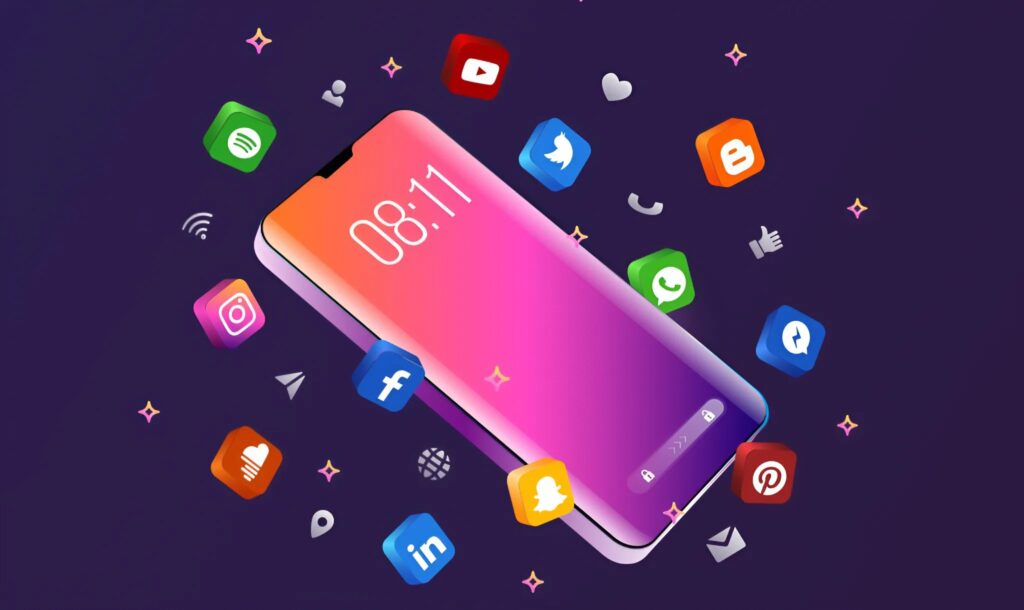
Market Research and Target Audience Analysis for Mobile App Marketing
Every successful marketing strategy is based on solid market research and audience analysis. Before you start marketing your mobile app, it is critical to find answers to the following questions:
- Market Need: Which need does your application fulfill? What gap does it fill? Are there similar applications in the market? How is the competitive environment?
- Target Audience Identification: Who does your app appeal to? What are their demographic and psychographic characteristics such as age, gender, interests, geographical location, technological competence? What are the mobile app usage habits, expectations and preferences of your target audience?
- Competitor Analysis: What marketing strategies are competitor apps using? What are their strengths and weaknesses? What are the points where you can differentiate from them?
Finding answers to these questions allows you to build your marketing strategies on the right foundations and utilize your resources in the most efficient way. Market research and audience analysis will guide you at every stage, from the positioning of your app to the creation of marketing messages, from channel selection to content strategy. You can follow our article “Venture Strategy Tools” to learn about strategizing before you start your business.
App Store Optimization (ASO)
App Store Optimization (ASO) is an important building block for mobile app marketing. It is all of the optimization work done to increase the discoverability and visibility of mobile apps in app stores (such as the App Store and Google Play Store). The primary goal of ASO is to ensure that potential users can easily find your app when they search for relevant keywords. ASO is a long-term and sustainable strategy that can significantly reduce your advertising budget by increasing organic user acquisition.
Key Components of ASO and Advanced Tactics
Keyword Research and Optimization
- Detailed Keyword Research: Don’t just limit yourself to general keywords. Analyze long-tail keywords related to your app, keywords used by competing apps, and users’ search behavior. Utilize keyword research tools (Sensor Tower, App Annie, MobileAction, etc.).
- Strategic Placement: Use keywords strategically not only in the app title, subtitle and description, but also in the keyword field (App Store) and in your developer name.
- Localization: If you publish your app in different countries, optimize your keywords for local languages and cultural nuances.
- Follow the Trends: Regularly monitor search trends and popular keywords in app stores and keep your ASO strategy up to date.
Application Title and Subtitle Optimization
- Short and Catchy Title: Choose a short, catchy and brand-reflective title for your app. Make sure to use the most important keyword in your title.
- Descriptive Subtitle (App Store): Use additional keywords for the subtitle (only available on the App Store) and short, punchy phrases that highlight the key benefits of your app.
Application Description Optimization
- SEO Compliant and User-Focused Description: Your description should be optimized for both search engines (app stores’ search algorithms) and potential users. Use keywords in a natural way, emphasize the features, benefits and unique value of your app.
- Storytelling: Instead of just providing a list of features, tell a story about how your app will make users’ lives easier, solve their problems or bring them joy.
- Call to Action: Include a call to action at the end of your description that encourages users to download the app.
Image and Video Optimization
- Stunning App Icon: Design your app icon to be eye-catching, professional and in line with your app’s theme. Make sure your icon looks clear and attractive on different sizes and devices.
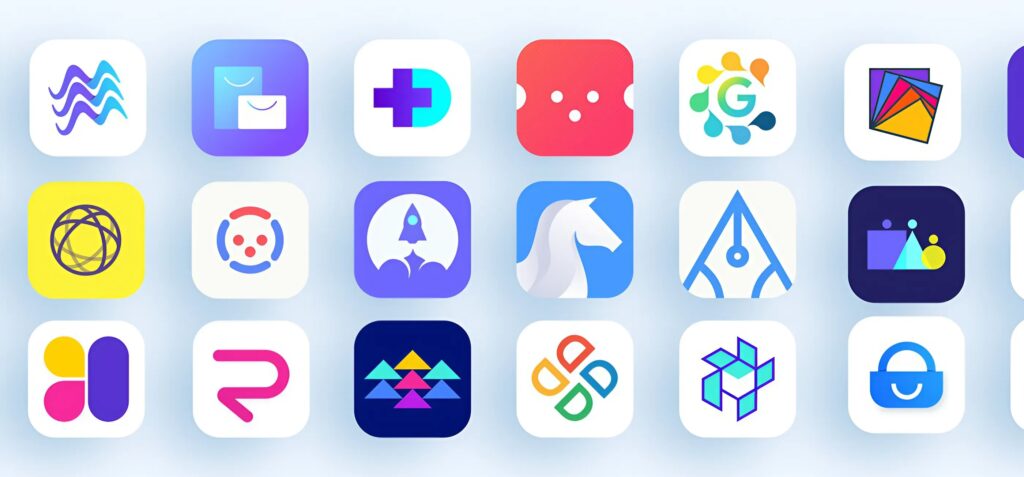
- Impressive Screenshots: Use high-quality, descriptive screenshots that showcase your app’s most important features and user interface. The first few screenshots should be the most eye-catching and immediately communicate the core value of your app.
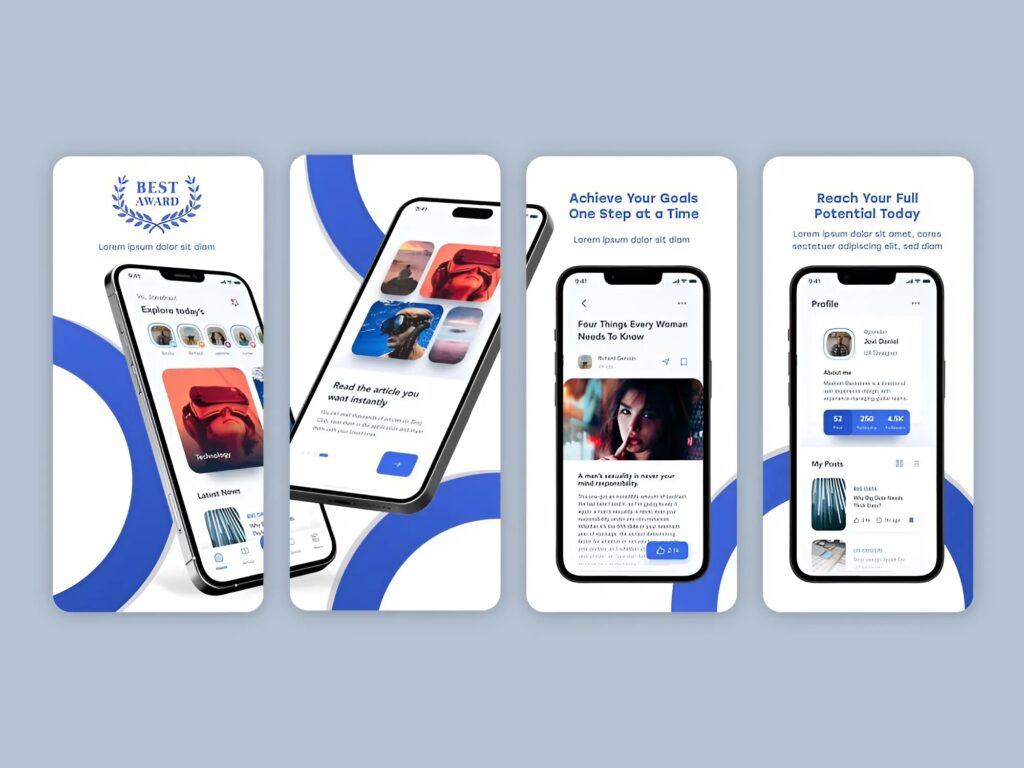
- App Preview/Promo Video: Create a short and compelling promotional video that dynamically demonstrates how your app works, its features and user experience. The first few seconds of your video should be attention-grabbing and encourage the user to watch until the end.
User Reviews, Ratings and Social Proof
- Encourage Positive Reviews: Encourage users to leave reviews and give ratings within the app or through your social media channels. Positive reviews from satisfied users increase your app’s credibility and positively impact download rates.
- Respond to Comments: Respond to both positive and negative comments in a timely and professional manner. Use negative comments as an opportunity to solve problems and increase user satisfaction.
- Use Social Proof: Showcase your app store ratings and positive user reviews on your website, social media accounts and marketing materials. You can also use social proof elements such as awards, press coverage or influencer recommendations.
- Continuous Optimization and Monitoring: ASO is a continuous process, not a one-off effort. Since app store algorithms and user behavior are constantly changing, you should regularly monitor, analyze and optimize your ASO strategy. Use analytics tools to track your ASO performance (keyword rankings, downloads, conversion rates, etc.) and improve your strategy based on the data.
Social Media Marketing for Mobile App Marketing
Social media is one of the most powerful tools for mobile app marketing. With the right strategies, you can quickly increase awareness of your app on social media platforms, interact directly with potential users and build a loyal community.
Advanced Social Media Strategies
Deep Target Audience Understanding and Segmentation
- Create Detailed Audience Personas: Don’t just limit yourself to demographics. Get in-depth information about your audience’s interests, values, lifestyles, motivations, problems and expectations. Create separate persona profiles for different user segments.
- Social Listening: Analyze the topics your target audience is talking about, hashtags they use, accounts they follow and content they interact with on social media platforms. Gain valuable insights using social listening tools (Brandwatch, Mention, Hootsuite Insights, etc.).
Platform Selection and Strategic Asset Building
- Choosing the Right Platforms: For Mobile App Marketing, identify the social media platforms where your target audience is most active. Choose the most appropriate platforms for the type and content of your app (for example, Instagram and TikTok for visual-oriented apps, LinkedIn for professional apps, Facebook and Twitter to reach large audiences).
- Developing Platform Specific Strategies: Each social media platform has its own dynamics and user behavior. Develop separate content strategies, sharing formats and engagement tactics for each platform.
- Consistent Brand Identity: Create and maintain a consistent brand identity (logo, colors, font, tone of voice, etc.) across all social media platforms.
Engagement-Oriented and Valuable Content Strategy
- Various Content Formats: Don’t just limit yourself to text-based posts. Use visually appealing content (photos, infographics, GIFs, memes), videos (live streams, training videos, user stories, promotional videos), surveys, contests, Q&A sessions and interactive content (AR filters, games, quizzes).
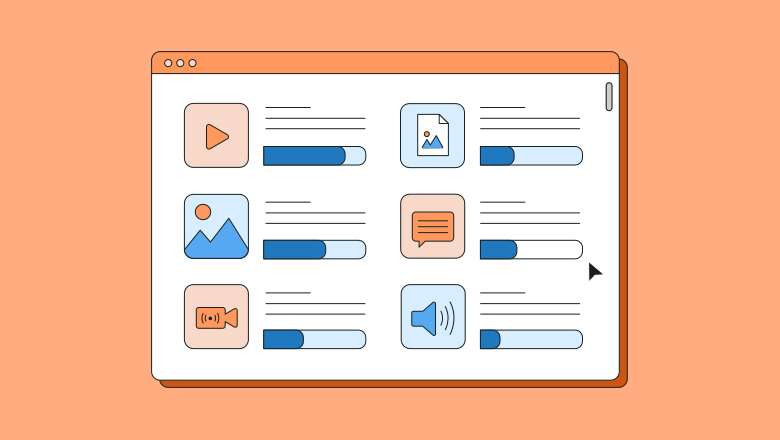
Mobile Advertising for Mobile App Marketing
- Value Driven Content Production: Don’t just promote your app. Produce educational, entertaining or inspirational content that will attract and add value to your target audience. Create a content calendar and share regular and planned content.
- User Generated Content (UGC): Promote user-generated content (photos, videos, comments, stories, etc.) related to your app and share it on your social media accounts. UGC is a powerful way to increase brand loyalty and community engagement.
- Using Trends and Hashtags: Follow trends and hashtags that are popular on social media and integrate them into your content. Trending content can help your posts reach a wider audience.
Social Media Advertising Campaigns for Targeted and Measurable Results
- Detailed Targeting Options: Deliver your ads exactly to your target audience using the advanced targeting options (demographic, interest, behavioral, location-based, etc.) offered by social media advertising platforms.
- Different Ad Formats and Objectives: Social media advertising platforms offer different ad formats (image ads, video ads, story ads, carousel ads, lead generation ads, etc.) and ad objectives (brand awareness, traffic, engagement, app downloads, conversions, etc.). Choose the formats and objectives that best fit your campaign goals and budget.
- A/B Testing and Optimization: Continuously A/B test your social media ad campaigns (different ad texts, images, target audiences, placements, etc.) and optimize them to improve performance.
- Retargeting: Create retargeting campaigns for users who have previously interacted with your app or website. Retargeting can significantly increase conversion rates.
Influencer Marketing to Build Trust and Authority
- Choosing the Right Influencers: Collaborate with trusted and authentic influencers for Mobile App Marketing that align with your app’s target audience. The number of influencers’ followers is as important as their engagement rates and alignment with your target audience. Micro-influencers (influencers who appeal to a niche audience and have higher engagement rates) can also be effective.
- Various Influencer Collaboration Models: Don’t just limit yourself to sponsored posts with influencers. Consider different collaboration models such as product reviews, contests, live broadcasts, exclusive discount codes or long-term brand ambassadorship.
- Measuring Campaign Performance: Use dedicated tracking links and analytics tools to track the performance of your influencer marketing campaigns (reach, engagement, traffic, downloads, conversions, etc.).
Community Management and Engagement
- Active Community Management: Regularly respond to comments, messages and mentions on your social media accounts. Resolve user queries quickly and effectively. Take user feedback into account and maintain an active dialog with the community.
- Encourage Community Engagement: Create content and campaigns that encourage users to comment, share, like and interact with each other. Organize engagement-focused events such as contests, polls, Q&A sessions, etc.
- Loyalty Programs and Rewards: Create loyalty programs or reward systems specific to your social media community. Reward your loyal followers with benefits such as exclusive content, discounts or early access.
Mobile advertising for Mobile App Marketing is an effective marketing method that enables your app to reach your target audience in a wider and faster way. You can increase the visibility of your app through different ad formats and channels, and use mobile advertising to increase the number of downloads and grow your user base.
Advanced Mobile Advertising Strategies and Types
Advertising Platforms and Networks
- Application Store Ads (Apple Search Ads, Google Play App Campaigns): The app stores’ own advertising platforms are an effective way to push your app directly to the top of app store searches and recommendations. In particular, you can use app store ads to support your ASO efforts and get fast results.
- Social Media Ads (Facebook Ads, Instagram Ads, Twitter Ads, TikTok Ads): The advertising platforms of social media platforms offer wide and detailed targeting options. You can create campaigns for different advertising purposes such as brand awareness, traffic, engagement, app downloads and conversions.
- Mobile Ad Networks (Google AdMob, Unity Ads, ironSource, AppLovin): Mobile ad networks offer the opportunity to show ads on thousands of mobile apps. You can use mobile ad networks to reach large audiences and advertise in different app categories.
- Programmatic Advertising: Programmatic advertising is the process of buying and selling ad space automatically. By using real-time bidding (RTB) and AI algorithms, you can use your ad budget more efficiently and deliver more personalized ad experiences.
Mobile Ad Formats and Creativity
- Banner Ads: Static or animated visual ads displayed on the top, bottom or side of applications or websites. Banner ads are a cost-effective option for brand awareness and reaching large audiences. However, click-through rates may be lower than other formats.
- Interstitial Ads: Ads that are displayed in full screen and are usually shown during application transitions (for example, after completing a level or when opening a menu). Interstitials can be attention-grabbing and effective, but should be used with care so as not to negatively impact the user experience.
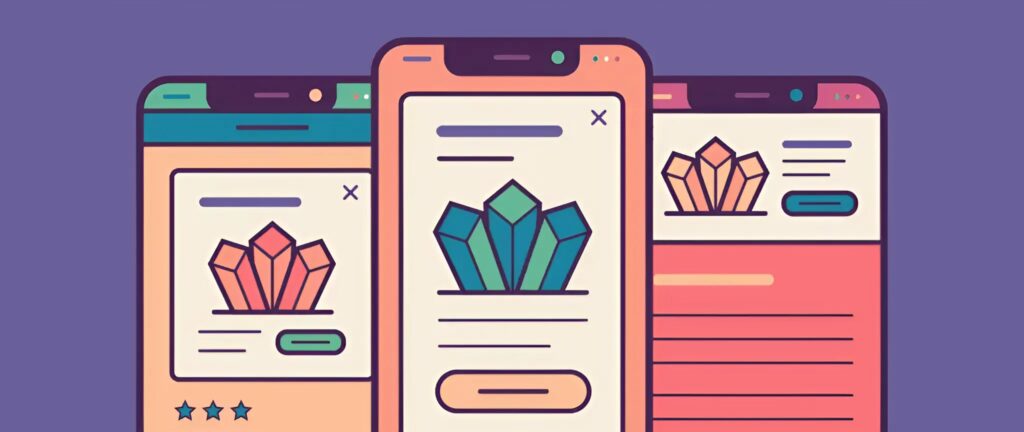
- Native Ads: Natural-looking ad formats that are compatible with the content of the app or website. Native ads are an effective way to deliver your advertising message and achieve higher engagement rates without disrupting the user experience.
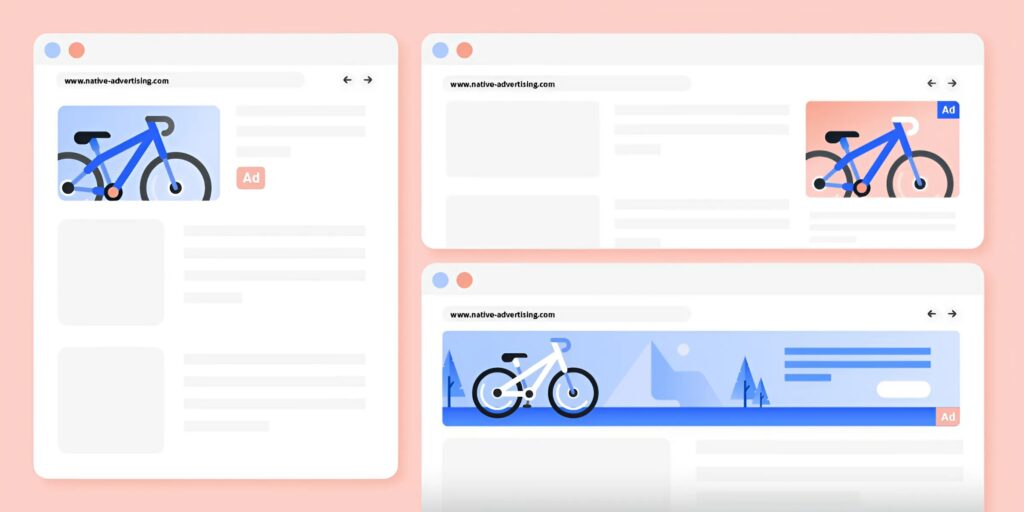
- Video Ads: Ads served in short video format (award-winning video ads, interstitial video ads, full-screen video ads). Video ads are a powerful tool to capture users’ attention and effectively communicate complex messages.
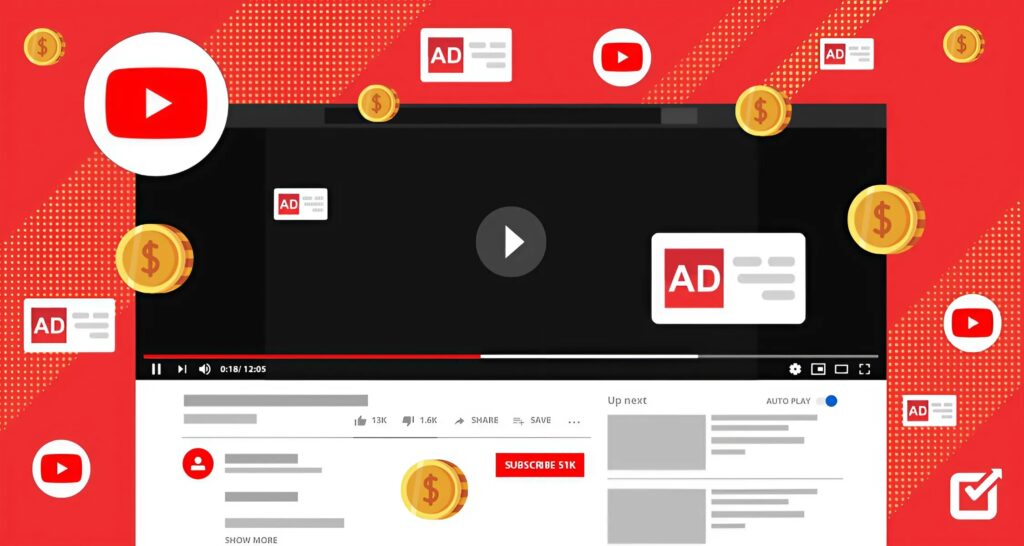
- Rich Media Ads: Advanced ad formats that include animations, audio, video and interactive elements that increase user engagement. Rich media ads can be effective for increasing brand engagement and conversion rates, but development costs can be higher than other formats.
- Playable Ads: Interactive ad formats where users experience a short game within the ad. Playable ads can be highly effective for app promotion and user acquisition, especially ideal for gaming apps.
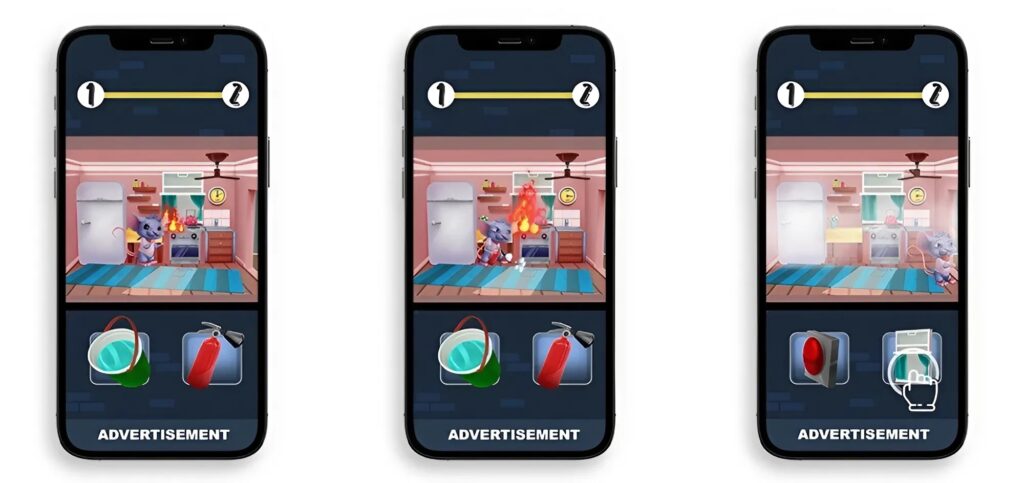
Targeting and Personalization
- Behavioral Targeting: Target your ads based on users’ app usage habits, interests, demographics and location. Behavioral targeting ensures that your ads reach the right people and increase conversion rates.
- Contextual Targeting: Target your ads in relation to the content of the app or website where they are shown. Contextual targeting increases ad relevance and makes it more likely that people will click on your ads.
- Retargeting: Create retargeting campaigns for users who have previously interacted with your app or website. Retargeting increases brand recall and can significantly boost conversion rates.
- Personalized Advertising Messages: Personalize your ad messages using user data and segmentation. Personalized ads are more effective in engaging users and increasing engagement.
Budget Management and optimization
- Setting an Advertising Budget: Set a realistic advertising budget based on your marketing goals, the size of your target audience and the costs of advertising platforms.
- Bidding Strategies: Use the different bidding strategies (CPC – Cost Per Click, CPA – Cost Per Thousand Impressions, DBS – Cost Per Conversion, etc.) offered by advertising platforms according to your campaign goals.
- Campaign Monitoring and Optimization: Regularly monitor and analyze the performance of your mobile ad campaigns (impressions, clicks, click-through rate, conversion rate, acquisition cost, etc.). Continuously optimize targeting, ad formats, ad messages and bidding strategies to improve your campaign performance. Perform detailed campaign tracking using analytics tools (Google Analytics, Firebase Analytics, Adjust, AppsFlyer, etc.).
In-App-Purchases
The in-app purchase model is an effective monetization strategy that allows you to generate revenue by allowing users to purchase virtual goods, additional features or content within your app. It aims to monetize by providing value to users and doesn’t interrupt the user experience as much as ads.
Advanced In-App Purchasing Strategies:
Freemium Model and Paid Content:
- Basic Features Free, Premium Features Paid: For Mobile App Marketing, offer the basic functionality of your app for free, while allowing users to pay for premium options such as more advanced features, extra content, removal of ads or special perks. The freemium model allows you to build a large user base and convert some of these users into paying customers.
- Multi-tiered Premium Packages: Offer users a variety of premium packages (e.g. basic, standard, premium) for different needs and budgets. Make sure each package offers different features, content or benefits
- Paid Content (Paywall): Make certain sections, levels or content of your app paid. Users must pay to access this paid content. A paywall strategy can be particularly effective for content-based apps (news apps, education apps, streaming platforms, etc.).
Virtual Currencies and In-Game Items:
- In-game Virtual Currencies: In game applications, use virtual currencies (gold, diamonds, jewelry, etc.) for in-game items (character costumes, power-ups, new levels, virtual items, etc.). Users can purchase virtual currencies for real money and spend these virtual currencies on in-game items.
- Limited Time Offers and Discounts: Offer limited-time special offers or discounts for virtual currencies or in-game items. This tactic can encourage users to make a purchase decision.
- Collectibles and Rarity: Create in-game collectibles (cards, stickers, rare items, etc.). Rare and valuable collectibles can motivate users to make more purchases.
Consumable and Non-consumable Products:
- Consumables: Items that, once used, are consumed and need to be purchased again (e.g. in-game lives, power-ups, virtual currencies). Consumables are an effective way to ensure a continuous revenue stream.
- Non-Consumables: Products that, once purchased, are owned permanently (for example, unlocking premium features, removing ads, special characters or skins). Non-consumables offer long-term value to users and can be sold at higher prices.
Pricing Strategies and Optimization:
- Psychological Pricing: Set prices based on user psychology. For example, prices like $9.99 may seem more attractive than $10.
- Dynamic Pricing: Adjust prices dynamically based on user behavior, demand levels or in-game events.
- A/B Tests: A/B test different pricing strategies, product offerings and purchase flows to find the best performing combinations.
- Streamlining the Purchase Flow: Make the in-app purchasing process as easy and seamless as possible for users. Offer clear and understandable pricing, secure payment options and fast transaction processes..
Ethics and User-Friendly Approach:
- Transparency: Present in-app purchase options and prices clearly to users. Avoid hidden costs or misleading tactics.
- Value Driven Approach: Ensure that in-app purchases offer real value to users. When users pay, they should get a meaningful and satisfying experience in return.
- Avoid Overdoing It: Avoid aggressively offering in-app purchase options in a way that annoys users or disrupts the gaming experience. Balance your monetization strategy with the user experience.
Reach Large Audiences and Generate Revenue with Ads
While displaying ads on mobile apps is a common way to generate revenue, it should be implemented carefully and strategically as it can negatively impact the user experience. With the right ad formats, placements and frequency adjustments, you can both generate revenue and maintain user satisfaction.
Advanced Mobile Advertising Models and Strategies:
Choosing the Right Ad Formats:
- Banner Ads: Can be cost-effective for brand awareness and continuous exposure, but click-through rates are low and can further disrupt the user experience. They are usually displayed permanently at the bottom or top of the app.
- Interstitial Ads: Displayed full screen and can be more eye-catching, but can further disrupt the user experience. They should be shown during app transitions or natural intervals. It is important to apply a frequency limit.
- Native Ads: Because they are integrated into the content and appear natural, they are less disruptive to the user experience and can have higher engagement rates. They should be placed in accordance with the content flow or app design.
- Video Ads: Can be a powerful format for capturing users’ attention and communicating complex messages. Rewarded video ads can be more acceptable in terms of user experience, as users watch them voluntarily and receive a reward in return. Passable video ads also allow users to skip the ad after a certain amount of time.
Ad Placement and User Experience Optimization:
- Natural Placements: Place ads in natural intervals that don’t interrupt the user flow and in places that align with the content. For example, you can show ads at level transitions in gaming apps, between articles or at the end of lists in content apps.
- Frequency Capping: Avoid showing too many ads to users. Limit the number of ads shown to the same user within a certain period of time. Frequency capping prevents ad fatigue and improves user experience.
- Option to Skip or Turn Off Ads: For interstitials and video ads, give users the option to skip or close the ad. This increases users’ sense of control and reduces the negative experience.
- Ignoring User Feedback: Track user feedback on ads (comments, ratings, surveys, etc.) and optimize your ad strategy with user satisfaction in mind.
Award-winning Video Ads: User Requested, For Value:
- User Initiated Ad Experience: Rewarded video ads are based on the principle of asking users if they want to watch ads and offering in-game rewards (virtual currency, boosters, extra lives, etc.) to those who choose to watch ads. This model makes ads less intrusive and increases the likelihood of users engaging with them.
- The Right Balance of Rewards: It is important that rewards are enticing enough to encourage users to watch ads, but balanced enough not to disrupt game economics or app balance. Optimize reward types and amounts through A/B testing.
- Strategic Placement: Place reward video ads at natural points of need in-game (e.g. for users running out of lives or low on in-game currency) or easily accessible in menus. Optimize ad placement to increase users’ motivation to earn rewards.
Affiliate Marketing and Cross Promotion:
- In-App Affiliate Links: Place affiliate links within your app that lead to other apps or services that are relevant and may be of interest to users. You can earn commissions per referral or per sale. Affiliate marketing can be a way to generate additional income and add value to users.
- Cross-Promotion: Promote other apps from your own app portfolio within your app, or other app developers’ apps that you collaborate with within your app. Cross-promotion can be effective for growing your user base and creating synergies between your different apps.
Subscription Models for Sustainable Revenue and User Loyalty
The subscription model is an ideal monetization strategy for apps that want to generate long-term and regular revenue, increase user loyalty and deliver continuous value. Subscription model can be especially successful for content-based apps (streaming platforms, news apps, educational apps, etc.) and apps that offer regular updates and new features.
Advanced Subscription Strategies:
Different Subscription Tiers and Value Propositions:
- Tiered Subscription Packages: Offer users tiered subscription packages (e.g. Basic, Standard, Premium) with different prices and features. Make sure that each tier offers different value propositions and benefits. A Basic package may offer more limited features, while a Premium package may include the most comprehensive features and benefits.
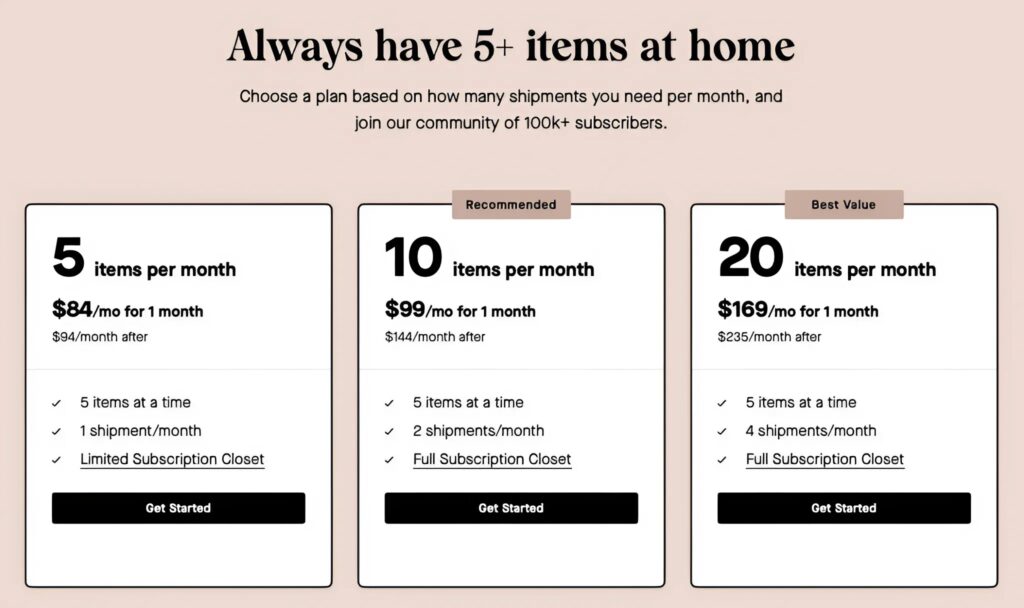
- Clarify Value Propositions: Clearly and concisely communicate to users the value that each subscription tier offers. Make it clear what features, content or benefits each package includes. Your value propositions should match the needs and expectations of your target audience.
Free Trial Periods and Incentives:
- Attractive Free Trial Periods: Offer attractive free trial periods (7 days, 14 days, 30 days, etc.) for users to try your subscription model. During the trial period, users should have full access to premium features and experience the value of your app.
- Increase Conversion Rates at the End of the Trial Period: Focus on adding value to users during the trial period. Before the trial ends, send notifications or messages to users reminding them of the benefits of subscription and encouraging them to subscribe. You can increase conversion rates by offering special discounts or bonus content for the first subscription.
Dynamic Content and Continuous Value Delivery:
- Regular Content Updates: For apps based on a subscription model, it is critical to regularly provide subscribers with new content, features, updates or events. Continuous delivery of value keeps users subscribed and active within the app. Publish regular and scheduled content by creating a content calendar.
- Personalized Content Recommendations: Deliver personalized content recommendations based on users’ interests and usage habits. Personalization boosts user engagement and increases subscription value.
- Community Features: You can increase user engagement and loyalty by offering subscribers exclusive community features (e.g. private forums, live streams, events).
Subscription Management and User Loyalty:
- Easy Subscription Management: Provide users with an interface where they can easily manage their subscriptions (cancel, upgrade, downgrade, update payment information, etc.). Make the subscription management process as transparent and user-friendly as possible.
- Churn Reduction Strategies: Regularly monitor churn rates and analyze the causes. Consider user feedback, improve customer service, enhance your value propositions and create special retention campaigns to reduce churn rates. For example, you can offer special discounts or bonus content to users who want to leave to keep their subscription.
- Loyalty Programs and Rewards: Increase user loyalty by rewarding long-term subscribers with special benefits (e.g. discounts, exclusive content, early access, personalized support). Loyalty programs strengthen users’ commitment to your brand and increase subscription lifetime value (CLTV).
Analytics and KPI Tracking to Measure and Optimize Success
Analytics and KPI (Key Performance Indicators) tracking are critical to measure the success of your mobile app marketing and monetization strategies, analyze your performance and make continuous improvements. Making data-driven decisions allows you to use your marketing budget in the most efficient way and accelerate the growth of your app.
Key Performance Indicators (KPIs):
User Acquisition (UA) KPIs:
- Number of Downloads: Shows how many times your app has been downloaded from app stores. Track different metrics such as total downloads and organic downloads.
- Cost Per Acquisition (Cost Per Acquisition – CPA): Shows the average cost you spend to acquire a new user. Compare CPA values for different marketing channels and campaigns.
- Cost Per Install (CPI): Shows the average cost you pay for each install made through your ad campaigns. Track CPI to measure the efficiency of your ad campaigns.
- Conversion Rate: Shows the percentage of users who take a specific action (e.g. downloading an app, signing up, making a purchase). Increasing conversion rates is an important way to improve the effectiveness of your marketing campaigns.
Engagement and Usage KPIs:
- Daily Active Users (DAU): Shows the number of unique users actively using your app in a day. DAU is an important indicator of user engagement and the daily appeal of your app.
- Monthly Active Users (MAU): Shows the number of unique users actively using your app in a month. MAU indicates the size of your user base and the monthly reach of your app.
- Session Length: Shows the average amount of time users spend in your app. Session length shows the depth of user engagement and how long your app keeps users engaged.
- Sessions Per User: Shows the average number of times users log in to your app on a daily or monthly basis. The number of sessions shows how often users return to your app.
- Frequency of Use: Shows how often users use your app (daily, weekly, monthly). Frequency of use shows user habits and the place of your app in their daily lives.
- Feature Usage: Shows how much different features in your app are being used. Feature usage rates help you identify the features that users are most interested in and your development priorities.
Monetization KPIs:
- Average Revenue Per User (ARPU): Shows the average revenue you generate from each user using your app. ARPU shows your overall revenue performance and your revenue per user potential.
- Paying User Rate: Shows the ratio of paying users in your app to the total user base. Paying user rate shows the effectiveness of your monetization strategies and how willing users are to pay.
- Average Purchase Value (APV): Shows how much paying users pay on average. APV shows the average amount users spend per purchase and your revenue potential.
- Customer Lifetime Value (CLTV): Estimates the total revenue a user will bring to your app over the course of their subscription or app usage. CLTV is important for measuring your long-term revenue potential and the effectiveness of your user loyalty programs.
- Return on Ad Spend (ROAS): Shows how much revenue your ad spend generates. ROAS is critical for measuring the profitability of your ad campaigns and budget optimization.
User Retention KPIs:
- User Retention Rate: Shows the percentage of users who continue to use your app after a certain period of time (for example, after 1 day, 7 days, 30 days). User retention rate shows how long your app is able to retain users and its long-term success.
- Churn Rate: Shows the percentage of users who stop using your app within a certain period of time. Reducing the churn rate is important to retain and grow your user base.
Analytical Tools and Platforms:
App Analytics Platforms (Google Analytics for Firebase, Firebase Analytics, Adjust, AppsFlyer, Mixpanel, Amplitude): These platforms offer comprehensive analytics data such as user behavior, engagement metrics, app performance, marketing campaign performance and monetization data. Data visualization, segmentation and reporting features help you better understand your data.
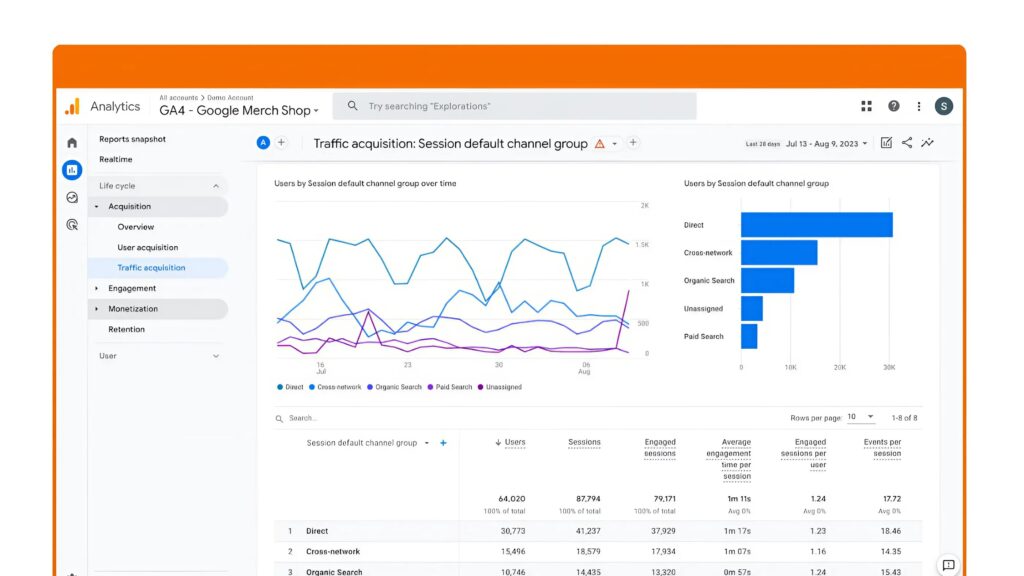
App Store Consoles (Google Play Console, App Store Connect): App store consoles provide key analytics data such as app download counts, user demographics, crash reports and ASO performance data. Important for tracking your ASO efforts and app store performance.
Social Media Analytics Platforms (Facebook Analytics, Instagram Insights, Twitter Analytics, TikTok Analytics): Social media platforms’ own analytics tools allow you to track the performance of your social media campaigns, follower engagement and demographic data. Important for optimizing your social media marketing strategies.
Custom Dashboards and Reporting: Create custom dashboards and reports by combining data from data analytics platforms. Visualize your KPIs, analyze trends and track your performance regularly.
Holistic Marketing Strategy and Continuous Improvement Cycle
Mobile app marketing and monetization are not separate tactics, but rather an integrated set of strategies that complement and support each other. It is important to develop a holistic marketing strategy and adopt a continuous improvement cycle for a successful mobile app.
Integrated Marketing Approach: Use different marketing channels and tactics such as ASO, social media marketing, mobile advertising, content marketing, email marketing, PR and influencer marketing in an integrated way. Create a marketing ecosystem where different channels support and synergize each other.
User-Centered Approach: Put user experience and user value at the center of all your marketing and monetization strategies. Increasing user satisfaction, ensuring user loyalty and getting positive user reviews are critical to your long-term success.
Make Data-Driven Decisions: Make your marketing and monetization decisions based on data. Analyze analytical data regularly, track your KPIs, identify trends and optimize your strategies based on data.
Continuous Testing and Optimization: Continuously test your marketing and monetization strategies, run A/B tests, try different tactics and identify the approaches that work best. Be open to continuous learning, adapting and optimizing as the marketing world and user behavior is constantly changing.
Agile Marketing: Structure your marketing processes according to agile methodologies. Work in short sprints, create fast feedback loops, be flexible and adapt quickly to changing conditions. Agile marketing allows you to experiment quickly, learn from mistakes and continuously improve.
In a Nutshell;
Mobile app marketing and monetization is a dynamic and constantly evolving field. To achieve success, it is not enough to simply follow current trends; you also need a solid strategy, in-depth market and user understanding, creativity, a data-driven approach and an openness to continuous learning. The comprehensive insights and strategies presented in this guide will help you more effectively manage the marketing and monetization of your mobile app, grow your user base and create a sustainable revenue model. Remember, mobile app success is measured not only by download numbers, but also by user engagement, satisfaction and long-term value creation.


